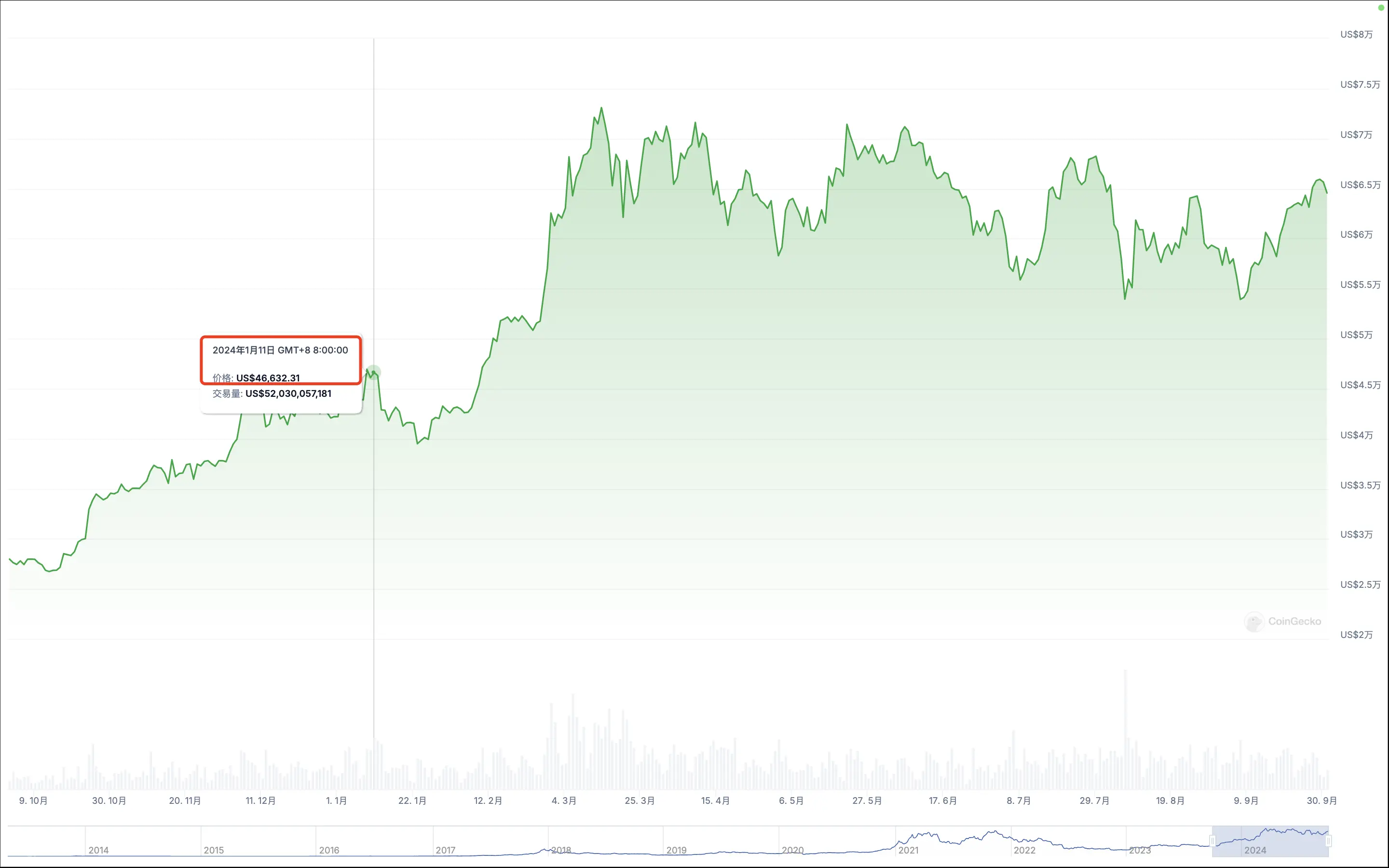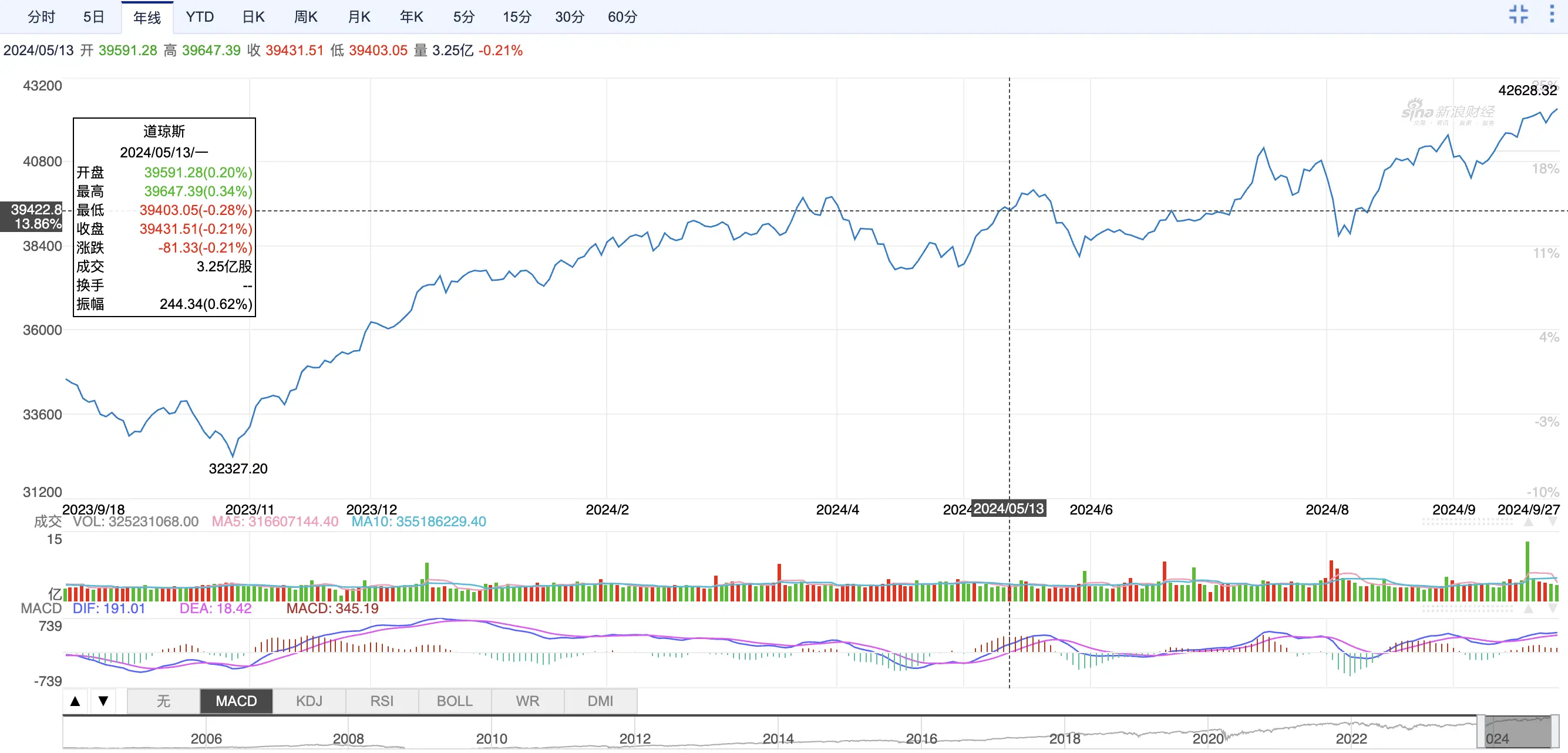A-shares rise above 3300 points, strengthening their backbone; Cryptocurrency vs Stock Market 2024 correlation node retrospective
Author: Wenser, Odaily Planet Daily

"Up again!"
"It has risen more than 130 points!"
"A web author from Qidian has bet everything on A-shares, making over 3 million and then stopped updating!"
"A new stock starting with CL has risen over 17 times today, isn't that scarier than meme coins on SOL?"
"Someone made 520,000 RMB in the morning, and data shows that A-share investors made an average of 47,000 RMB in just 4 days!"
With the Federal Reserve being the first to cut interest rates, the global market has opened a long-awaited "liquidity flood," and A-shares have also begun a new round of "recovering lost ground" under the stimulus of multiple favorable policies from the central bank. It is reported that on September 30, the trading volume of A-shares exceeded 25 trillion RMB, setting a historical record; previously, it took only 35 minutes for the trading volume to surpass 1 trillion, breaking the "historical fastest 1 trillion record." The crazy market is attracting more and more investors, and many cryptocurrency practitioners are claiming that "they have withdrawn large amounts of money, aiming directly at the A-share limit-up." On the other hand, the relationship between cryptocurrencies and U.S. stocks is also strengthening—previously, according to IntoTheBlock data, the correlation between BTC and the U.S. stock market reached its highest level since Q2 2022 last week. After the approval of Bitcoin spot ETFs and Ethereum spot ETFs, this situation also reflects the deepening coupling between traditional financial markets and the cryptocurrency industry.
Odaily Planet Daily will retrospectively sort out the key nodes of Bitcoin prices this year, providing a glimpse into the correlation between Bitcoin, as a "barometer" of cryptocurrencies, and the corresponding performances of U.S. stocks and A-shares during different periods.
Back to 2024: BTC Price Key Nodes vs. U.S. Stocks and A-shares Performance
At the beginning of the year, the milestone event of "Bitcoin spot ETF approved by the SEC" became the best annotation for the accelerated mainstreaming of the cryptocurrency industry. Looking back at BTC's performance since January this year, although it experienced several months of fluctuations and multiple price dips after breaking new highs, compared to other investment targets during the same period, it still belongs to the category of "quality assets and safe-haven assets." Below is a summary of BTC key points from January to September and their corresponding performances with U.S. stocks and A-shares:
January 11 - Bitcoin Spot ETF Officially Approved
On January 11, 2024, local time, the SEC officially approved several Bitcoin spot ETF funds, marking the beginning of a new process of "mainstreaming cryptocurrencies." Although this news was "leaked" two days earlier due to the hacking of the SEC's official account on X platform, Bitcoin's price reacted relatively coolly after a slight increase prior, but it still showed a "steady improvement" compared to before, laying a solid foundation for subsequent breakthroughs to historical highs.
At that time,
BTC price was around 46,632 USD;
A-share Shanghai Composite Index was around 2,881 points;
U.S. Dow Jones data was around 37,584 points.

BTC Price

Shanghai Composite Index

U.S. Dow Jones
March 14 - BTC Hits New High, "No Longer Owing Anyone"
On March 14, as funds continued to flow into Bitcoin spot ETFs, U.S. investors' enthusiasm for Bitcoin investment surged, and the cryptocurrency industry was also immersed in an optimistic atmosphere of a "crypto bull market." The Solana meme coin craze began to emerge, and many previously funded star projects were gearing up for TGE and preparing to launch on top exchanges. Amid this positive sentiment, Bitcoin's price continuously broke through previous high points, ultimately exceeding the historical high of around 69,000 USD on the 14th and rising to over 73,000 USD.
At that time,
BTC price was around 73,097 USD;
A-share Shanghai Composite Index was around 3,036 points;
U.S. Dow Jones data was around 38,888 points.

BTC Price

Shanghai Composite Index

U.S. Dow Jones
April 20 - Halving Arrives, Results Unexpected
On April 20, Bitcoin successfully completed its fourth halving. Before the halving, discussions about Bitcoin's price were varied; some believed that the halving would promote a rapid increase in Bitcoin's price in the short term, while others thought it would lead to a decrease in mining revenue and a sharp drop in miners' income. The story that followed is well-known: Bitcoin's price did not rise rapidly and even briefly fell below 60,000 USD; miners' income did not sharply decline but instead benefited from the growth of Bitcoin ecosystem projects like Rune, with daily income once breaking historical highs.
At that time,
BTC price was around 63,988 USD;
A-share Shanghai Composite Index was around 3,066 points;
U.S. Dow Jones data was around 37,918 points.

BTC Price

Shanghai Composite Index

U.S. Dow Jones
May 12 - BTC Plummets Then Rises, Regional Political Situation Increasingly Influential
In early May, after experiencing a flash crash on the 1st and 2nd, Bitcoin's price gradually stabilized and climbed to around 60,000 USD. However, at the same time, the increasingly tense political situation in the Middle East due to escalating conflicts and the heated political climate brought on by the U.S. presidential election cast a shadow over the development of both the cryptocurrency market and traditional financial markets, including U.S. stocks. Compared to the "disappointment and even despair in the fluctuating market" in July and August, many cryptocurrency investment institutions and industry insiders still held a mostly optimistic view of the market at that time. For more information, see “3-Minute Overview of Bitcoin's Future Outlook: Moving Towards…?”.
At that time,
BTC price was around 60,776 USD;
A-share Shanghai Composite Index was around 3,144 points;
U.S. Dow Jones data was around 39,422 points.

BTC Price

Shanghai Composite Index

U.S. Dow Jones
August 5 - BTC Falls 15,000 USD in 4 Days, Market in Panic
August 5 may be a day that many cryptocurrency industry practitioners still recall with a shiver. On that day around 2 PM, according to OKX market data, Bitcoin's price once fell to 48,934.8 USD, with a 24-hour drop of 15%, and a price drop of 15,000 USD in just 4 days, marking the largest drop of the year up to that point, plunging the cryptocurrency market into extreme panic. Looking back, the panic at that time was undoubtedly influenced by the immense pressure of the global macroeconomic downturn, with U.S. stocks losing nearly 3 trillion USD in market value overnight, equivalent to 2.5 times the cryptocurrency market. This event once again validated that the cryptocurrency market is increasingly intertwined with the global economic market, and the performance of both markets is closely related. As the old saying goes: "No eggs are left unbroken under the fallen nest," the cryptocurrency market is also hard to remain unscathed.
At that time,
BTC price was around 53,956 USD;
A-share Shanghai Composite Index was around 2,860 points;
U.S. Dow Jones data was around 38,687 points.

BTC Price

Shanghai Composite Index

U.S. Dow Jones
September 20 - Federal Reserve "Unprecedentedly" Cuts Rates by 50 Basis Points, Global "Liquidity Flood" Arrives
At 2 AM on September 19, the Federal Reserve announced the start of a rate-cutting cycle, lowering the federal funds rate by 50 basis points to 4.75%-5.00%, marking the first rate cut since March 2020. Subsequently, global markets surged, and a series of favorable policies were introduced domestically, including interest rate cuts, reserve requirement ratio reductions, and stimulus measures for the investment market. The "national team" invested hundreds of billions, aiming to boost confidence in the capital market. The continuous rise of A-shares in recent days is the best evidence, and the "exponentially rising K-line" of the Shanghai Composite Index now appears extremely steep, aligning perfectly with the "To Da Moon" curve long advocated by the cryptocurrency industry.
At that time,
BTC price was around 63,128 USD;
A-share Shanghai Composite Index was around 2,739 points;
U.S. Dow Jones data was around 42,063 points.

BTC Price

Shanghai Composite Index

U.S. Dow Jones
Conclusion: The Correlation Between the Cryptocurrency Market and Traditional Financial Markets is Gradually Strengthening
Looking back at the BTC price trends, A-share index trends, and U.S. Dow Jones trends this year, we can clearly draw the following conclusions:
After the approval of Bitcoin spot ETFs, Bitcoin's safe-haven asset attribute has somewhat weakened compared to gold;
After the approval of Bitcoin spot ETFs, Bitcoin's price trend is more influenced by the U.S. Dow Jones index rather than the opposite;
Bitcoin spot trading, due to its 24/7 trading flexibility, is more sensitive to macroeconomic conditions and geopolitical factors, with greater volatility than U.S. and A-share markets;
The A-share fluctuation range, represented by the Shanghai Composite Index, has long remained around 2,800-3,100 points. In contrast, the Dow Jones has shown more significant growth, rising from 37,000 points at the beginning of the year to around 42,600 points recently, with an increase of about 15%. Bitcoin's price has risen from 42,000 USD at the beginning of the year to around 64,000 USD now, with an increase of about 52%, making it a "quality investment target for the year";
In the long run, although the current size of the cryptocurrency market (according to Coingecko data, currently totaling 2.36 trillion USD) is far less than the trading volumes of A-shares and U.S. stocks, which can reach tens of trillions, there may still be a possibility of "bidirectional siphoning." Channels such as Hong Kong virtual currency ETF funds and U.S. ETF funds have opened the door for capital inflow into traditional financial markets, but they may also lead to a further return of the already scarce liquidity in the cryptocurrency market.
For the cryptocurrency industry, how to introduce more real-world assets and massive liquidity from traditional financial markets through ecological construction, narrative, application, market, and consumption is the next "industry-level challenge" that practitioners cannot avoid. Mass Adoption may not be urgent, but attracting more capital inflow is an immediate priority.









